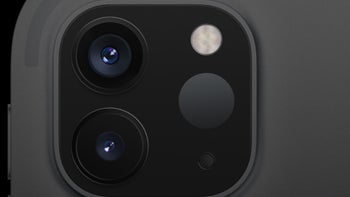Samsung reportedly drops feature from 5G Galaxy S21 (S30) because it can't top Apple's version

A Time of Flight sensor on a smartphone or tablet sends out pulses of light undetectable to the human eye. Usually an infrared light, the beams bounce off a subject and return to the device. With this data, a phone can calculate the precise distance it is away from the subject allowing it to improve AR capabilities and create better bokeh blurs for portraits. With the feature, 3D mapping can be used for a facial recognition systems.
Samsung's inability to license a direct ToF sensor has led it to drop the feature on the Galaxy S21 (S30)
A report from Korea's The Elec (via Android Central) says that as it did with the recently unveiled Galaxy Note 20 series, next year's Galaxy S21 (or S30) line will not sport a ToF sensor. There are a few reasons why Samsung has made this decision; the report cites the lack of a breakthrough application. The ToF sensor is a feature with cool technology waiting for a reason to use it. But there is more to this story; after all, many smartphone companies have included features that ended up being a huge waste of money. The ToF sensor was included on last year's Galaxy S10 and Note 10 lines, and this year's Galaxy S20 models. This was done, according to those in the know, so that Samsung could keep up with Apple and Huawei in case some must-have application for ToF was created.

Samsung is concerned that its indirect ToF system isn't as good as Apple's LiDAR seen here driving an AR app for the iPad Pro
As the late Paul Harvey would say, "here's the rest of the story." Samsung's version of ToF is not as expensive to produce as Apple's but it also means that it is not as precise as the LiDAR depth sensor that will be employed on the 2020 iPhone 12 models. The direct method favored by Apple is as described in the opening paragraph of this article. Samsung uses an indirect method and instead of trying to explain it, let's just say that Apple's direct method can work at distances up to six meters or 19.69 feet. Samsung's ToF has half the range as Apple's does. Apple introduced the LiDAR sensor with its latest iPad Pro models released last March.
Besides the difference in cost, Samsung is stuck using the indirect method because the only company able to produce the technology needed for direct ToF use is Sony and the latter is said to have an exclusivity deal with Apple. Behind the scenes, Sammy ain't giving up. The company's LSI unit is reportedly working on semiconductors that would allow it to deliver calculations as precise as those measured using the Direct ToF method while using the indirect system. If Samsung can workaround Sony's exclusivity and a bombshell new application is created, ToF could resurface on a future Galaxy phone.
The Galaxy S21 (S30) could be powered by the Snapdragon 875 Mobile Platform or Samsung's own Exynos 1000. Both chipsets are produced using the 5nm node allowing them to be more powerful and energy-efficient than the current SoCs used on Android devices. Earlier today, a Twitter tipster said that Samsung is considering the return of the earphone jack as an experiment. And there is speculation that the top-of-the-line camera array will feature a 150MP sensor.
Samsung is also believed to be following in Apple's footprints by removing the charging brick from the boxes holding its first flagship phones of 2021. The goal is to save the company some of the money that would have gone into procuring the part; with top-shelf handsets continuing to go up in price, asking consumers to purchase their own charging brick or use one from an older model could be a valid if not popular solution. However, Apple and Samsung, if you're listening: make purchasing the brick an option with online orders. This will allow consumers to simply click a box on the screen to make sure that he or she will have the latest and fastest charger for the expensive new phone that was just purchased.










Things that are NOT allowed: